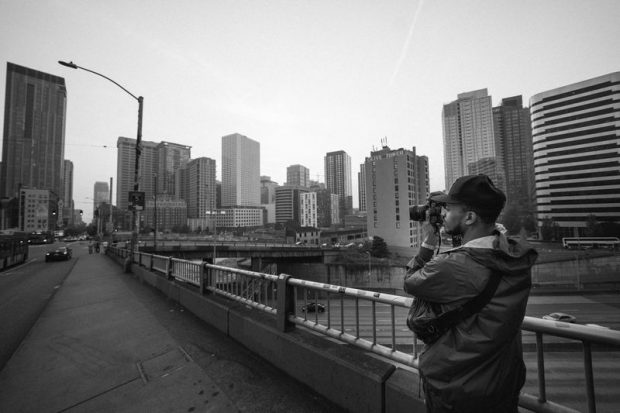The smart Trick of Framing Streets That Nobody is Discussing
Table of Contents3 Simple Techniques For Framing StreetsFraming Streets Fundamentals ExplainedThe Facts About Framing Streets RevealedThe Only Guide to Framing StreetsAll About Framing StreetsFascination About Framing Streets
Photography style "Crufts Canine Show 1968" by Tony Ray-Jones Street digital photography (likewise in some cases called candid photography) is digital photography conducted for art or query that includes unmediated possibility encounters and arbitrary events within public locations, generally with the goal of capturing photos at a decisive or poignant minute by mindful framework and timing. 
What Does Framing Streets Do?
Susan Sontag, 1977 Road photography can concentrate on individuals and their behavior in public. In this regard, the street professional photographer is comparable to social documentary professional photographers or photographers who likewise work in public locations, but with the aim of catching relevant occasions. Any one of these photographers' pictures might record people and home noticeable within or from public areas, which usually involves navigating moral issues and laws of privacy, safety, and residential or commercial property.
Representations of everyday public life form a category in virtually every duration of world art, beginning in the pre-historic, Sumerian, Egyptian and early Buddhist art periods. Art taking care of the life of the road, whether within sights of cityscapes, or as the leading motif, shows up in the West in the canon of the North Renaissance, Baroque, Rococo, of Romanticism, Realistic look, Impressionism and Post-Impressionism.
Getting The Framing Streets To Work
Louis Daguerre: "Boulevard du Holy place" (1838 or 1839) In 1838 or 1839 the first picture of figures in the road was taped by Louis-Jacques-Mand Daguerre in one of a set of daguerreotype views extracted from his studio home window of the Boulevard du Holy place in Paris. The 2nd, made at the height of the day, shows an uninhabited stretch of road, while the other was taken at regarding 8:00 am, and as Beaumont Newhall reports, "The Blvd, so regularly loaded with a relocating bunch of pedestrians and carriages was completely singular, except a person who was having his boots cleaned.
His boots and legs were well defined, however he is without body or head, because these were in movement." Charles Ngre, waterseller Charles Ngre. https://framingstreets1.start.page was the very first photographer to obtain the technological elegance needed to sign up people in activity on the street in Paris in 1851. Digital Photographer John Thomson, a Scotsman dealing with reporter and social activist Adolphe Smith, released Street Life in London in twelve regular monthly installments beginning in February 1877
The Basic Principles Of Framing Streets
Eugene Atget is considered as a progenitor, not because he was the very first of his kind, however as a result of the popularisation in the late 1920s of his record of Parisian streets by Berenice Abbott, who was inspired to embark on a comparable paperwork of New York City. [] As the city developed, Atget helped to advertise Parisian streets as a worthy subject for photography.

Our Framing Streets Diaries
Martin is the first taped professional photographer to do so in London with a disguised electronic camera. Mass-Observation was a social study organisation established in 1937 which aimed to record day-to-day life in Britain and to tape-record the responses of the 'man-in-the-street' to King Edward VIII's abdication in 1936 to wed divorce Wallis Simpson, and the sequence of George VI. Between 1946 and 1957 Le Groupe des XV annually displayed work of this kind. Andre Kertesz. Circus, Budapest, 19 May 1920 Street digital photography created the significant web content of two events at the Gallery of Modern Art (Mo, MA) in New York curated by Edward Steichen, 5 French Professional Photographers: Brassai; Cartier-Bresson, Doisneau, Ronis, Izis in 1951 to 1952, and Post-war European Digital Photography in 1953, which exported the concept of road digital photography globally.

An Unbiased View of Framing Streets
The recording machine was 'a concealed camera', a 35 mm Contax concealed beneath his layer, that was 'strapped to the breast and linked to a lengthy cord strung down the appropriate sleeve'. Nonetheless, his work had little modern influence as due to Evans' sensitivities regarding the creativity of his task and the privacy of his subjects, it was not released up until 1966, in guide Many Are Called, with an introduction written by James Agee in 1940.
Helen Levitt, then a teacher of children, connected with Evans in 193839. She recorded the temporal chalk drawings - Best Zoom Lens that belonged to children's road society in New york city at the time, along with the children who made them. In July 1939, Mo, MA's brand-new photography area consisted of Levitt's operate in its inaugural eventRobert Frank's 1958 publication,, was considerable; raw and often indistinct, try this website Frank's images questioned conventional photography of the time, "tested all the official guidelines set by Henri Cartier-Bresson and Walker Evans" and "flew in the face of the wholesome pictorialism and sincere photojournalism of American publications like LIFE and Time".